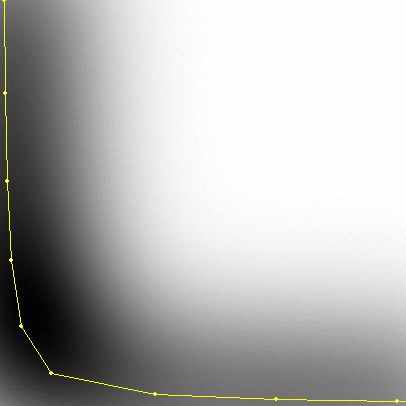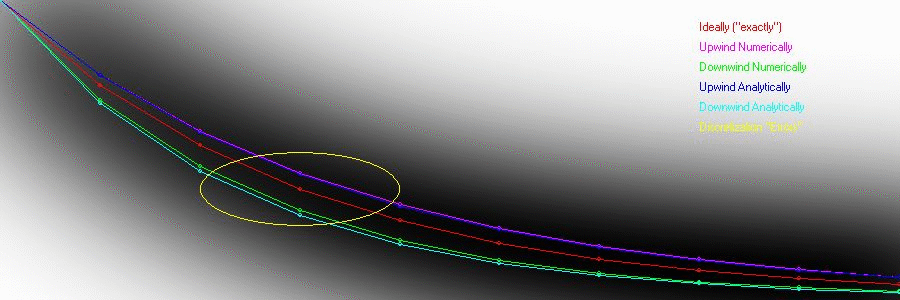
Ideal curves are essentially invisible. However, a quite convenient fuzzyfication ($\overline{\delta}$) of the delta function is the Gauss function: $$ \delta(x) = \lim_{\sigma\rightarrow 0} \norm e^{-\half x^2/\sigma^2} \hieruit \overline{\delta}_\sigma(x) = \norm e^{-\half x^2/\sigma^2} $$ Therefore any discretized curve, at $N$ sampling points $s = s_k$ , can be made approximately continuous again, as follows (apart from a norming factor, which can always be determined afterwards). $$ C(x,y) = \sum_{k=0}^{k=N} e^{-\half([x-f(s_k)]^2+[y-g(s_k)]^2)/\sigma^2} $$ In order for the theory in the preceding subsections to be applicable, it's essential that the points $s_k$ along the curve are more or less equidistant. And if such is not the case, define only one $\sigma$ , which is based then upon the largest arc increment. It's left as an exercise for the reader to guess what the reason is behind these rules. Back to business now. The taste of the pudding is in the eating. You're invited to take a look at the sampled and continuized hyperbola:

And the sampled and continuized decay function:

There's another story behind the sampled decay function, namely the
Numerical Ensemble of Exponential Decays.
A few remarks are in order. The above technique has been developed for curves
in the plane. Meaning, physically, that the functions $f$ and $g$ in $(x,y) =
[f(s),g(s)]$ have dimension of length. The spread $\sigma$ has a dimension of
length as well. Hence the exponent of a Gaussian, as a whole, is dimensionless.
With functions instead of curves, other physical dimensions than length may be
easily involved. In such cases, proper scaling of the $x$ and $y$ coordinates
is essential. One can hardly expect consistent results if f(s) = apples and
g(s) = pears. Proper scaling is accomplished most easily and naturally by the
use of dimensionless quantities. With exponential decay, for example, the $x$
coordinate is time and the $y$ coordinate is mass; dimensionless quantities
emerge if we divide time by the decay time and if we consider a mass of $1$
kilogram.
With Exponential Decay, we had no other choice than leaving the uniform abscissa
increments intact, though it leads to arc length increments differing at most
by a factor $\sqrt{2}$ (we choose the largest one). With the hyperbola, we have
employed a predictorfor abscissa increments, given that the arc length
increments $ds$ are constant. Because it is well known that each differentiable
function, within a small enough neighborhood, is a straight line segment. Thus
our predictor is: $dx = ds / \sqrt{1 + (y')^2} = ds / \sqrt{1 + (1/x^2)^2}$ .